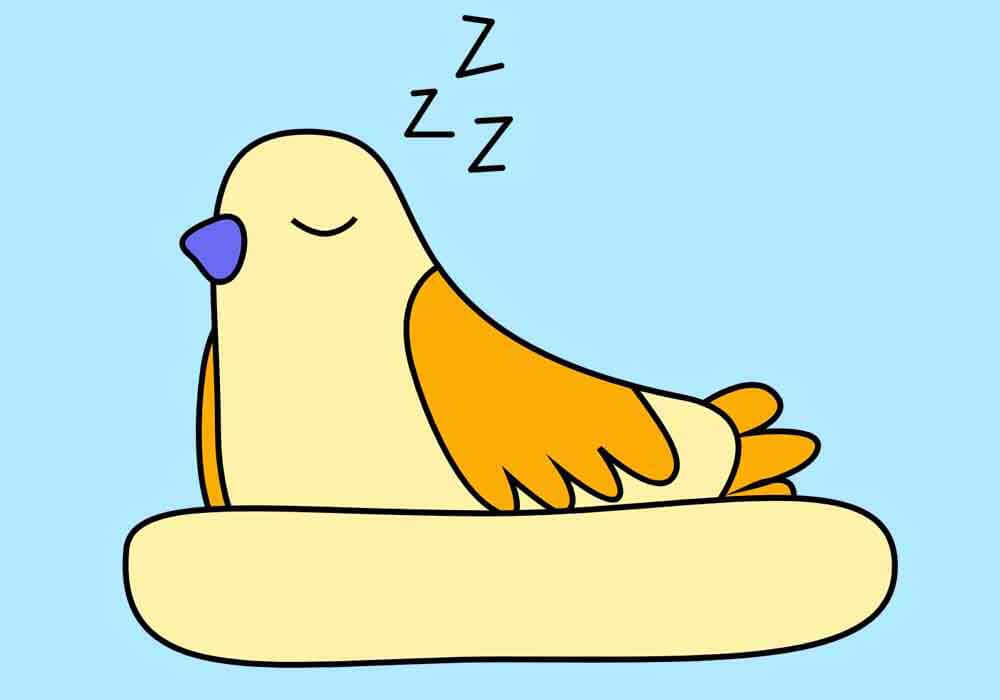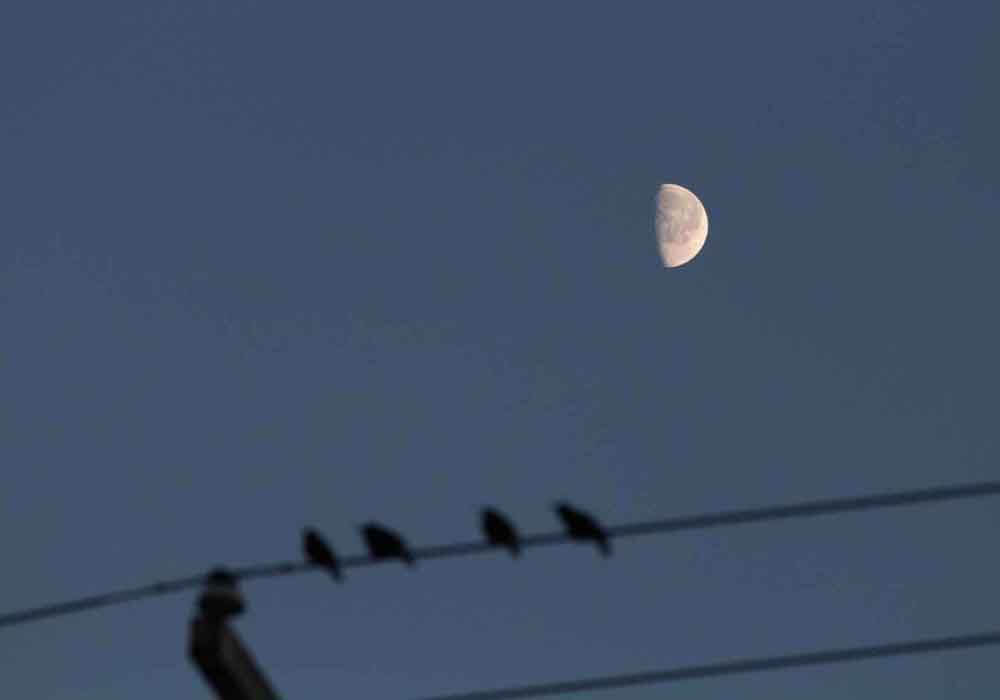How Do Birds Sleep?
Surprisingly, They Don't All Sleep The Same Way
Think about how often you encounter birds every day. Now ask yourself, have you ever seen one sleeping? Birds are fascinating animals that exhibit fascinating behaviors all the time, including when they sleep. So how do birds sleep?
Birds sleep in short, shallow bursts and stay alert the whole time. Most birds find a comfortable, safe place to rest, ruffle up their feathers, and tuck their head behind a wing. When birds sleep, it is called roosting. Some birds roost by a body of water, standing on one leg or even while flying.
In this article, I will talk about the fascinating science behind the study of how birds sleep compared to how people sleep. I will also explain where birds sleep and how different birds sleep in different ways. Keep reading to learn more and gain answers to some of your questions about how birds sleep.

Birds Sleep Differently Than People
When trying to understand how birds sleep, one must avoid comparing bird sleep to human sleep. Birds sleep at short intervals and very lightly to stay alert. Some sleep intervals are as short as a few seconds. If humans tried to sleep like birds, we might never feel rested.
That being said, there are some similarities between human and bird sleep. Have you ever felt less rested after sleeping in a new place for the first time? According to a study published in Current Biology, when people sleep in a new place, only half of their brain enters deep sleep. In contrast, the other half stays more active and alert.
This is called unihemispheric slow-wave sleep, and this behavior is exhibited by a lot of animals, like dolphins and birds. When animals enter unihemispheric slow-wave sleep, they usually keep one eye open. This way, they can respond to stimuli much more readily.
No one knows definitively where migratory birds sleep, but scientists who study birds (called ornithologists) suggest that migratory birds like geese can enter unihemispheric slow-wave sleep while they fly. That way, the birds don’t have to stop to rest at night. Migratory birds are perfectly capable of sleeping behind the wheel.
For more information about this fascinating behavior,
here is a short video that dives deeper into in-flight sleep:
Where Do Birds Sleep?
Different kinds of birds sleep in different places. I put together a list of places where different birds sleep below:
- Aquatic birds sleep on the side of bodies of water, and some sleep while floating. Swans, for example, sleep exclusively while floating, with their heads tucked in on their backs. Ducks sleep in lines, and individuals in the middle of the lines experience complete sleep. Ducks on either end of the line sleep with one eye open and display unihemispheric slow-wave sleep.
- Songbirds sleep on branches, on top of rocks, or in bushes. Songbirds are usually small prey animals, so they want to find well-hidden places to sleep. Songbirds also sleep with half a brain at a time to stay as alert as possible. Songbirds in cities will find crevices in buildings to sleep on.
- Raptors and birds of prey sleep standing on one leg, with their head tucked in on their backs. Some birds of prey, like falcons, sleep on high perches to have a good view of potential meals below them.
- Owls sleep in different places depending on their species. Most owls sleep in trees, on rocks, and on the ground. One species of owl makes a burrow underground to sleep in. All owls sleep during the day.
- Penguins sleep standing up on the ice. Penguins sleep by tucking their beak underneath a wing to stay warm. Penguins have thick feathers that are incredibly insulating, and they lose most of their heat through their beak, so when they sleep, they tuck it away.
Do Birds Sleep in Nests?
Birds don’t sleep in nests unless they are caring for a clutch of eggs or babies. Baby birds don’t have the same feathers as adult birds and depend on their parents to stay warm and cozy at night. Birds prefer to sleep on a tree branch, where they feel safer and more able to respond to threats.
Birds can hang onto tree branches in their sleep because they can lock the tendons in their legs. Their grip on branches is so tight that
How Do Birds Stay Warm?
Some birds migrate to warmer climates when fall comes around. The Arctic Tern takes migration to an extreme, as it migrates between the north and south poles every year. Now we know these migratory birds might be sleeping along the way, like taking a power nap during a commercial flight.
Non-migratory birds take a different approach. First, they try to gain some weight as winter arrives by gaining a layer of fat. The fat insulates them from the cold and allows them to go longer without eating as their food sources dwindle during the colder months. Cold-adapted birds ruffle up their feathers to trap air between them, which insulates them. This type of insulation is what makes down jackets so warm.
Birds also huddle together. Wrens, for example, might make a tight chain along a branch and cuddle to share and preserve their body heat during particularly cold days, which looks adorable too.
How Do Birds Sleep?...Closing Thoughts
Many birds only rest half of their brain at a time when sleeping to stay more alert or to keep from drifting away in the case of water birds like ducks. Migratory birds can sleep while they fly, so they don’t have to stop overnight on the way to their destinations.
Birds' sleep behavior and adaptations are incredibly impressive, as they sleep in trees, on branches, on the water, on a shoreline, on the ground, and even underground. You might not even be able to tell when a bird is asleep because of how different their sleep is from ours.
Back To The TOP Of This How Do
Birds Sleep Page

About the Author...
Richard Worden, a dedicated bird lover for over 20 years, I love to share my in-depth knowledge and passion for birds. Read more About Me and my expertise in this field.
- We Know Birds HOME ›
- Bird Behavior Facts and Information ›
- How Do Birds Sleep?



